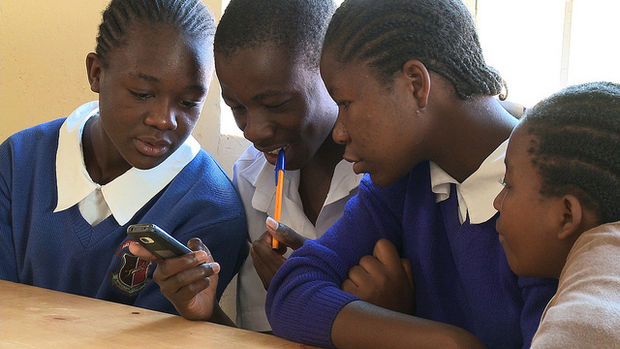NEWS
Quality Data To Ensure A Quality Education For Every Child

The SDG 4 Data Digest sets out a roadmap for countries and donors to produce quality data
The Sustainable Development Goals (SDGs), with their strong emphasis on inclusion and equity, compel us to look beyond national and regional averages to ensure that nobody is left behind. As a result, countries face unprecedented pressure to produce and use more and better data.
The new edition of the SDG 4 Data Digest, launched during the GPE Board meeting in Paris today, sets out the data challenges that confront countries and the international community. While last year’s Data Digest focused on the indicators needed to track progress, this year’s Digest zooms in on data quality as the foundation for an effective monitoring framework to support the pursuit of SDG 4: a quality education for every child by 2030.
Based on its longstanding track record working directly with countries, the UNESCO Institute for Statistics (UIS) has developed a series of tools and strategies to help national statistical offices and line ministries overcome the measurement challenges as part of the Institute’s mandate to serve as the custodian agency for most of the SDG 4 indicators.
Countries have the methodologies, tools and strategies they need to tackle the monitoring challenges of the SDG 4-Education 2030 Agenda. In parallel, donors and development partners can minimize transaction costs, improve coordination and collaboration, and gain an accurate picture of capacity-building needs. The Digest shows how we can leverage the power of data to ensure a quality education so that no one is left behind.
Objectives of the SDG 4 Data Digest 2017
The Digest contributes to three areas that are essential for effective monitoring.
- Strengthening statistical capacity to support effective implementation of the SDG 4-Education 2030 Agenda at national, regional and global levels;
- Incorporating efforts by donors and partners to improve the quality, reporting and use of education data into national strategies for education statistics that are grounded in national realities and priorities; and
- Increasing the effectiveness of the resources allocated to countries for their data production and capacity development.
Monitoring the international education agenda
The Digest highlights serious data gaps, with less than half (47%) of the data needed to produce the SDG 4 global monitoring indicators currently available. Moreover, the data that we do have paint a grim picture, with an estimated 617 million children and adolescents worldwide not achieving a minimum level of proficiency in reading and mathematics.
The Digest argues that the statistical capacity of most countries is being stretched by the breadth, depth and ambition of the global education goals, as well as the need to collect more data from a wider range of sources including: administrative data, financial data, censuses, household surveys as well as national, regional and international learning assessments.
One vital first step is, therefore, to expand national capacity to collect and report data, particularly in the countries with the greatest needs as shown in the map below.
Countries in need of statistical capacity development according to the availability of SDG 4 monitoring indicators
Yet as the Digest points out, the expansion of national capacity to produce more data is not enough. It is also vital to assess the data being produced relative to a set of minimum standards needed to ensure that statistical systems produce data of sufficient quality to inform dialogue and policymaking.
Helping countries take a sectoral view of education data and policy priorities
The SDG 4 Data Digest sets out a roadmap to produce the quality data needed for SDG 4. As shown in our video, the initial phases include a series of diagnostic steps – from mapping data sources to assessing their quality – needed to design a National Strategy for the Development of Education Statistics (NSDES). The aim is to take a comprehensive view of education data and policy priorities and identify what must improve.
The data quality roadmap
For each stage of the roadmap, the Digest presents a series of strategies and tools – developed and tested by the UIS – that include:
- Mapping tools to help countries identify potential data sources across ministries and national statistical offices, identify gaps, and locate potential opportunities to monitor SDG 4 by integrating different databases, enhancing existing instruments to collect additional data, and producing disaggregated data.
- Data quality assessment tools to evaluate and strengthen the processes by which countries produce and use different types of data, including administrative records, household surveys, learning assessments and expenditure information.
- Manuals, guidelines and codes of practice to support the production of data as well as templates for national indicator frameworks and strategies.
Bringing all the actors to the table to monitor progress towards SDG 4
To support countries and donors in their quest for more and better data, the Digest sets out the UIS model for statistical capacity development. This is rooted in the formulation of a national indicator framework, which is developed with the full engagement of all national stakeholders, and follows a comprehensive mapping that identifies the data sources that are already in place, as well as the information gaps.
The UIS strategic approach to capacity development is focused on results. However, the most sophisticated tools in the world will amount to little if countries cannot use them. As shown in the Digest, it is essential to create an enabling environment in which national statisticians and policymakers address their specific data needs while integrating SDG 4 within their policy priorities and statistical systems. Through this strategic approach, countries and donors can work together to allocate resources in a logical sequence that ensures good quality and timely data.
Through the Digest, the UIS is showing the way forward to create an SDG 4 Monitoring Compact that meets the needs of countries and development partners. The challenge is to transform this vision into action through the active support of a community of actors at all levels.